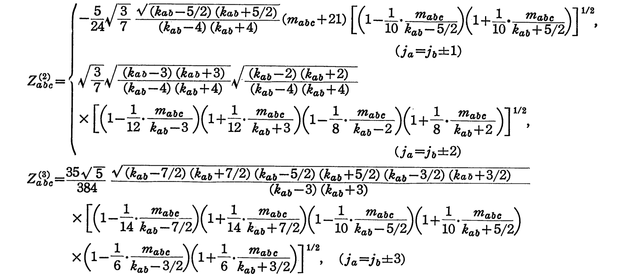 |
Alright, this may not be the most helpful way of understanding nuclear science. To make it simple, nuclear science is the study of the nucleus of the atom. What's an atom? Well, an atom consists of an extremely small, positively charged nucleus surrounded by a cloud of negatively charged electrons. Although typically the nucleus is less than one ten-thousandth the size of the atom, the nucleus contains more than 99.9% of the mass of the atom! Nuclei consist of positively charged protons and electrically neutral neutrons held together by the so-called strong or nuclear force. This force is much stronger than the familiar electrostatic force that binds the electrons to the nucleus, but its range is limited to distances on the order of a few x10-15 meters. The number of protons in the nucleus, Z, is called the atomic number. This determines what chemical element the atom is. The number of neutrons in the nucleus is denoted by N. The atomic mass of the nucleus, A, is equal to Z + N. A given element can have many different isotopes, which differ from one another by the number of neutrons contained in the nuclei. In a neutral atom, the number of electrons orbiting the nucleus equals the number of protons in the nucleus. Since the electric charges of the proton and the electron are +1 and -1 respectively (in units of the proton charge), the net charge of the atom is zero. At present, there are 112 known elements which range from the lightest, hydrogen, to the recently discovered and yet to-be-named element 112. All of the elements heavier than uranium are man made. Among the elements are approximately 270 stable isotopes, and more than 2000 unstable isotopes.
It's also important to understand decay and it's different properties. To make it easy: some isotopes are unstable, especially those with a lot of neutrons compare with the number of protons in the nucleus. These isotopes tend to eject some particles, in the form of radiation, until a stable nucleus is produced. Such ejection process is called the radioactive decay. Isotopes that undergo radioactive decay are called radioisotopes or radionuclides. The decay process is not a chemical process, neither can it be controlled. It occurs spontaneously and at random. Radioactive decay often poses health risk, especially those with intense radiation, as it penetrates the body and destroys biological cells.
That's great and all, but what can we use nuclear energy for? At least 800 million of the world's seven billion inhabitants are malnourished, and tens of thousands die daily from hunger and hunger-related causes. Radioisotopes and radiation used in food and agriculture are helping to reduce these tragic figures.As well as directly improving food production, agriculture needs to be sustainable over the longer term. The UN's Food and Agriculture Organisation (FAO) works with the IAEA on programs to improve food sustainability assisted by nuclear and related biotechnologies.
On top of agriculture, nuclear energy can be extended to food preservation! Some 25-30% of the food harvested in many countries is lost as a result of spoilage by microbes and pests. In a hungry world we cannot afford this. The reduction of spoilage due to infestation and contamination is of the utmost importance. This is especially so in countries which have hot and humid climates and where an extension of the storage life of certain foods, even by a few days, is often enough to save them from spoiling before they can be consumed. Some countries lose a high proportion of harvested grain due to moulds and insects.In all parts of the world there is growing use of irradiation technology to preserve food. In over 40 countries health and safety authorities have approved irradiation of more than 60 kinds of food, ranging from spices, grains and grain products to fruit, vegetables and meat. It can replace potentially harmful chemical fumigants to eliminate insects from dried fruit and grain, legumes, and spices.
Nuclear energy can also be used for medicine. The uses of radioisotopes in therapy are comparatively few, but important. Cancerous growths are sensitive to damage by radiation, which may be external - using a gamma beam from a cobalt-60 source, or internal - using a small gamma or beta radiation source. Short-range radiotherapy is known as brachytherapy, and this is becoming the main means of treatment. Many therapeutic procedures are palliative, usually to relieve pain.Iodine-131 is commonly used to treat thyroid cancer, probably the most successful kind of cancer treatment, and also for non-malignant thyroid disorders. Iridium-192 wire implants are used especially in the head and breast to give precise doses of beta rays to limited areas, then removed. A new treatment uses samarium-153 complexed with organic phosphate to relieve the pain of secondary cancers lodged in bone
Overall, Nuclear energy has many more applications than this. It's important to go out and look for all the different applications available.
|

